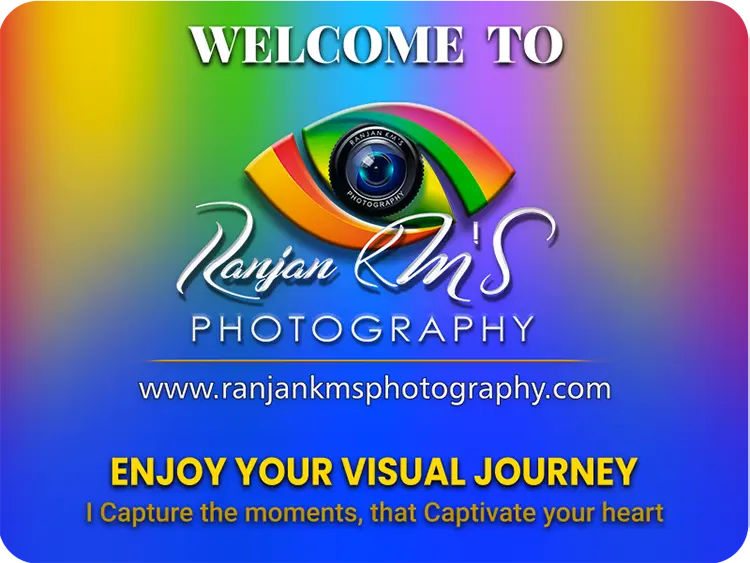Clicking Alone Won’t Make You Great: Why Theory Matters in Photography
- Ranjan KM

- Sep 16
- 16 min read
Why Theory Matters in Photography: The Foundation of Professionalism
Photography is often seen as just “pressing the shutter,” but true professionalism is built on a much deeper foundation. Behind every great image lies an understanding of theory — the science of light, the psychology of composition, and the artistic intent that transforms a simple picture into a meaningful photograph.
The Limitations of Practice Without Theory
Repetition without reflection: Many aspiring photographers believe that shooting thousands of images will automatically make them better. In reality, without theoretical knowledge, years of practice can result in the same mistakes repeated over and over.
Common scenario: A photographer keeps shooting portraits outdoors but struggles with harsh shadows. Unless they study the theory of light direction, diffusion, and color temperature, the issue persists no matter how many times they practice.
Professional difference: What separates an enthusiast from a professional is the ability to diagnose problems through theory and then apply practice to refine solutions.

Why Theory is the Backbone of Professional Growth
Understanding light: Theory explains how hard vs. soft light behaves, why golden hour looks different from midday sun, and how modifiers like diffusers or reflectors change the mood. This understanding makes you proactive instead of reactive.
Composition rules & psychology: Theory introduces the rule of thirds, leading lines, balance, and negative space — but also teaches when to break them to create impact.
Color and mood: A theoretically trained photographer knows how warm tones convey comfort, while cooler tones may suggest distance or melancholy.
Real-world link: In my own Wedding Photography projects, theory allows me to anticipate the flow of emotions and capture images that feel timeless, not just candid.
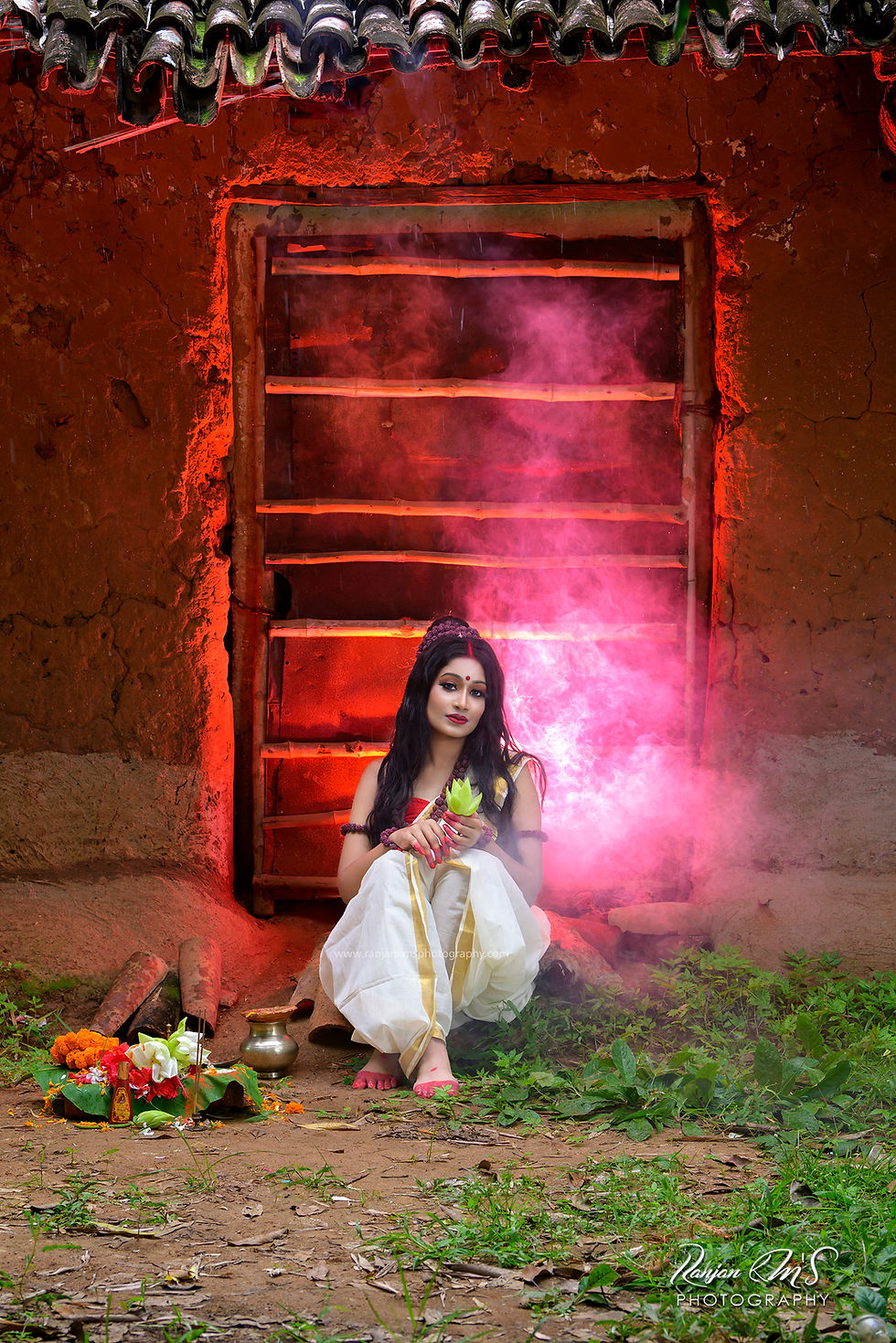
Learning Beyond the Camera Manual
Camera knowledge vs. vision: Knowing how to adjust shutter speed or ISO is mechanical. Knowing why to choose certain settings in relation to light, movement, or storytelling is theoretical.
Scenario: Two photographers use the same Nikon D850. One shoots in auto mode and gets decent pictures. The other understands exposure triangles, tonal ranges, and storytelling — producing images that feel cinematic.
Internal link suggestion: Here, you can guide readers to your Credentials page to show your formal training and certifications.

The Blend of Art and Science
Photography is dual-natured: It is both technical (science of optics, sensors, lighting) and expressive (art of emotion, narrative, aesthetics).
Without theory: The science is missing. Images may look “lucky” but lack consistency.
With theory: Every frame becomes intentional, reflecting mastery.
Example: In my Maternity Photography sessions, theory helps me balance flattering light with soft emotional tones, ensuring each mother’s journey is portrayed beautifully.
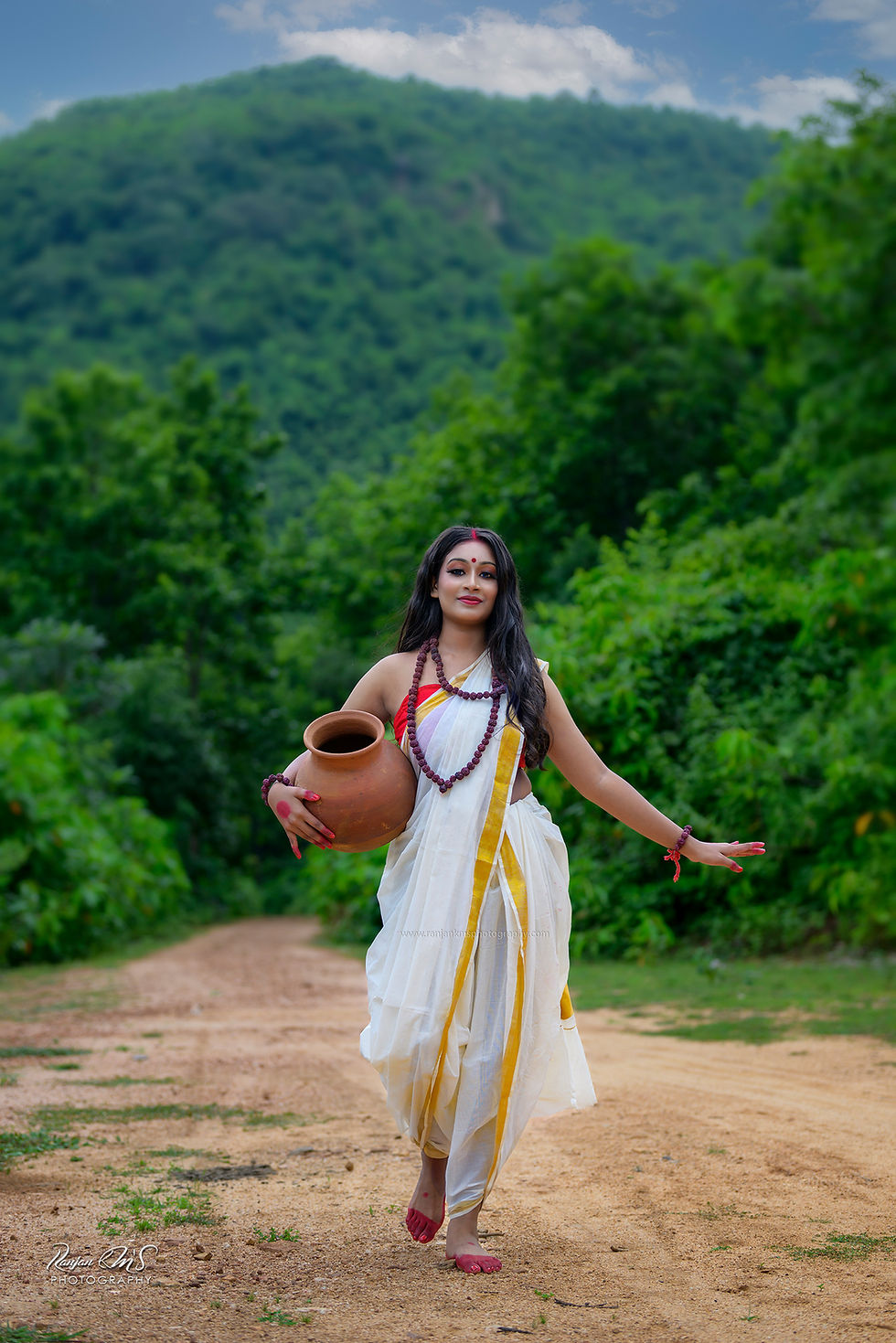
The Myth of Endless Clicking — Why Quantity Doesn’t Equal Quality
In today’s digital age, it’s easy to believe that taking thousands of photographs will automatically sharpen one’s skills. But in reality, endless clicking without reflection or study rarely leads to growth. Many beginners confuse practice with progress — yet professional mastery comes from thoughtful learning, not sheer numbers.
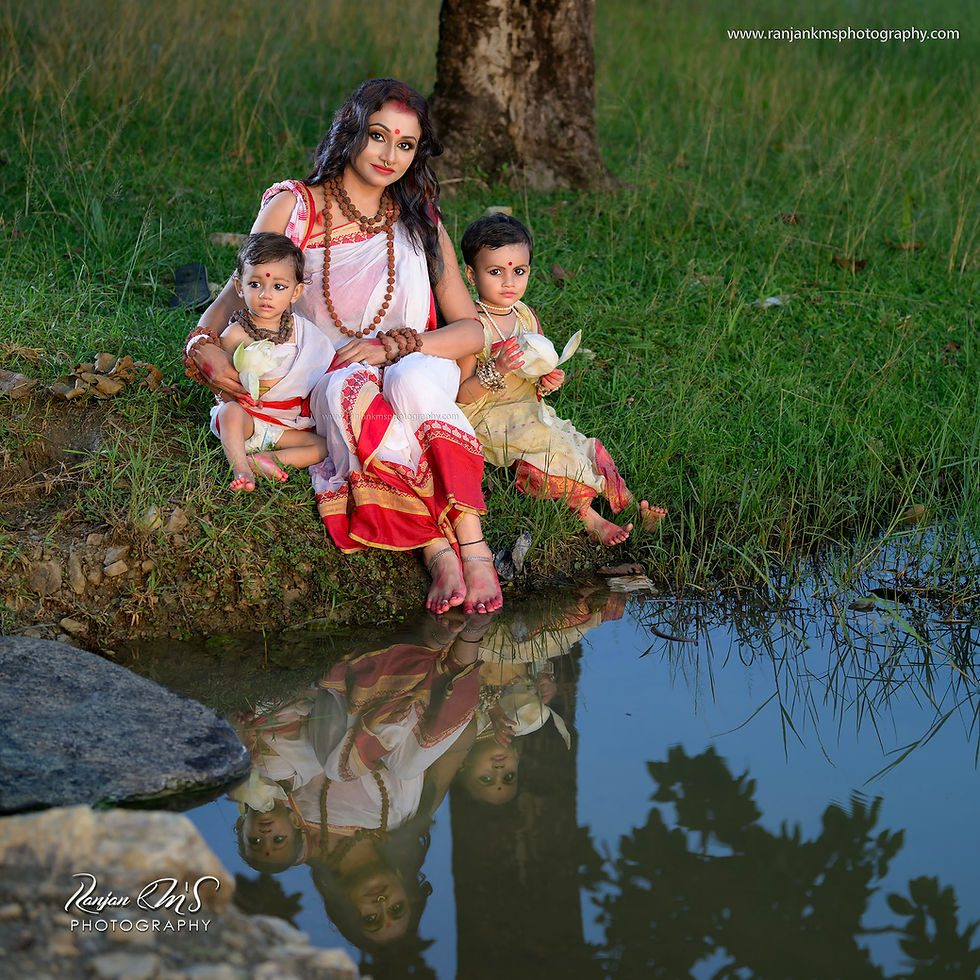
The Trap of “Spray and Pray”
Definition: Clicking hundreds of shots in the hope that “something will work.”
Problem: Without analyzing results, photographers repeat the same mistakes. Overexposed skies, unflattering angles, or poor timing don’t magically fix themselves.
Result: Instead of improvement, photographers often feel frustrated and stuck.
Why Quality Outweighs Quantity
Professional truth: A handful of well-composed images can outshine thousands of random frames.
Theory + intent: When each frame is built on an understanding of light, composition, and subject psychology, it holds far greater impact.
Focus keyword use: This is why Why Theory Matters in Photography is more than just a saying — it’s the very key that separates purposeful creation from blind clicking.
A Real-World Example
Case study: Imagine a Birthday Celebration shoot. A beginner may capture 500 images, most of them repetitive or unusable. A trained professional, however, can deliver 60–80 frames that are consistent, artistic, and emotionally powerful.
Client perspective: Clients value impactful storytelling over large dumps of images. A curated gallery feels intentional and polished.
How to Break Free from the “Click More, Learn Less” Cycle
Review consciously: After every session, analyze your images to identify what worked and what failed.
Learn before you shoot: Invest time in studying light behavior, framing psychology, and color theory — so you enter shoots with clarity instead of guesswork.
Apply and refine: Practice isn’t about repetition; it’s about applying knowledge in varied conditions until theory becomes instinct.
Internal link suggestion: You could link here to your Behind the Scenes page or a blog post that showcases how fewer but intentional shots led to better outcomes.
How Theory Shapes a Photographer’s Vision
Photography is not just about pressing a button; it’s about translating what you see into what others feel. Here is where theory acts as a compass. Without it, photographers may capture “what is there” but miss “what it means.” With it, every frame gains intention, depth, and storytelling power.

The Power of Visual Literacy
Definition: Visual literacy is the ability to read and interpret images, just like reading text.
Example: When photographing a couple during their Wedding Ceremony, knowing how symmetry and leading lines work ensures the composition reflects balance, unity, and emotional harmony.
Takeaway: A technically sharp but visually illiterate photograph is often lifeless.
Light as Language
Light theory teaches us how shadows, highlights, and gradients tell a story.
Scenario: A maternity shoot can look flat under harsh overhead light, but with controlled directional light (and the right modifiers), it transforms into a poetic celebration of life.
Client value: This is where clients recognize professionalism — not just in having “a good camera,” but in mastering light as a medium.
Internal link suggestion: Insert here your Maternity Portfolio for a real demonstration of light storytelling.
Composition as Psychology
Why it matters: The way a subject is placed within the frame subconsciously affects how viewers interpret it.
Examples:
A child photographed from a low angle seems powerful and energetic.
The same child, shot from above, feels small, vulnerable, or playful.
Implication: Theory trains us to make deliberate choices instead of accidental ones.
Color as Emotional Trigger
Science meets art: Colors influence mood and perception.
Scenario: In Hotel & Real Estate Photography, warm tones can make a room feel inviting, while cooler tones may emphasize luxury or professionalism.
Why it matters: Understanding color theory lets you match the image’s emotion with its purpose.
From Seeing to Envisioning
Amateurs: They look at the scene and capture what’s obvious.
Professionals: They visualize the end result before pressing the shutter — adjusting angles, light, and colors based on theory.
Real-world story: During an engagement shoot, a professional may already anticipate how backlight during golden hour will create a halo effect, while a beginner might simply record the moment.
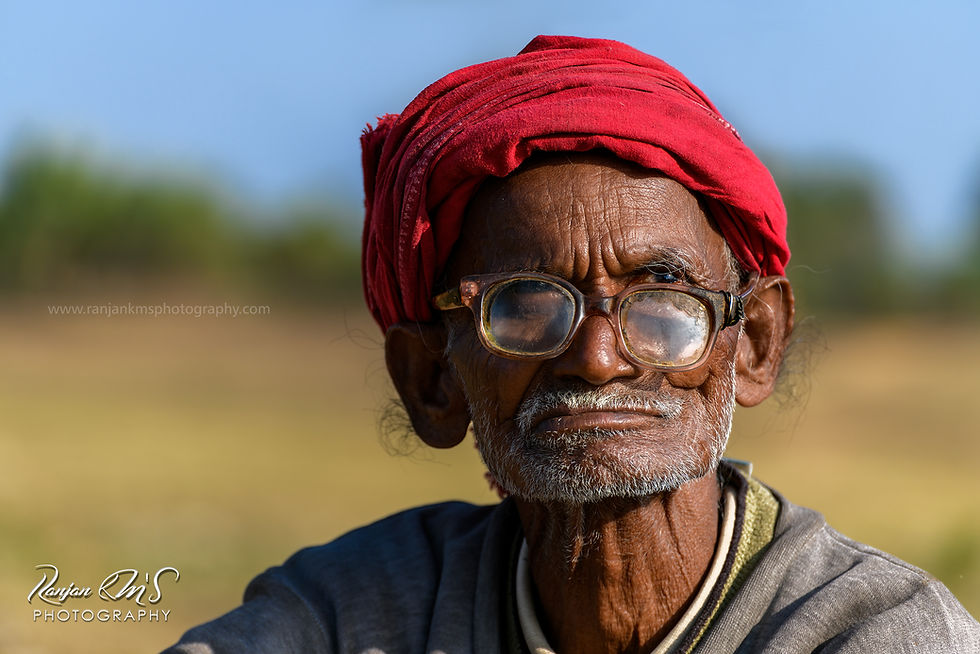
The Do’s and Don’ts of Learning Photography Theory
Many aspiring photographers struggle with theory because they either treat it as dull textbook jargon or ignore it altogether. The truth is, learning theory is not about memorizing rules — it’s about understanding why images work. Here’s a roadmap to study effectively.
The Do’s
✅ Do Start with the Basics
Learn about exposure triangle (aperture, shutter speed, ISO).
Understand how light behaves (hard vs soft light, natural vs artificial).
Grasp composition essentials: rule of thirds, leading lines, framing, negative space.
✅ Do Apply Theory Immediately
Each time you learn a concept, test it with real photos.
Example: If you study color harmony, try shooting a portrait series where warm and cool tones interact deliberately.
Suggested internal link: showcase examples in your Portrait Photography Portfolio.
✅ Do Study Great Photographers
Analyze how masters used light, framing, and timing.
Don’t just look at what they captured — ask why it works.
✅ Do Keep a Learning Journal
Note observations: how a lighting angle changed mood, or how wide vs telephoto lens altered perspective.
This builds awareness that becomes instinctive with practice.
The Don’ts
❌ Don’t Blindly Copy
Inspiration is good, but imitation without understanding theory limits originality.
Example: Using trendy presets without understanding color theory often leads to inconsistent or artificial-looking images.
❌ Don’t Skip the Boring Stuff
Optics, sensor technology, dynamic range — they may sound technical, but they influence results.
In E-commerce Photography, failing to understand reflections and distortions can ruin a product shoot.
❌ Don’t Overcomplicate
Beginners often read too much at once.
Learn in layers — foundation first, then advanced theories.
❌ Don’t Assume Gear Will Replace Knowledge
Owning a flagship camera doesn’t guarantee mastery.
Example: A pro with mid-tier gear but deep knowledge of lighting will outshoot a beginner with a Nikon Z9 but no grasp of exposure.
The Intersection of Photography Theory and Practice in Real Shoots
Understanding photography theory is one thing; applying it under real conditions is another. Professional shoots rarely happen in controlled classrooms — they happen in dynamic, unpredictable environments. This is where theory proves its true worth.
Wedding Photography – Timing Meets Composition
A wedding is filled with fleeting moments — the exchange of rings, a parent’s tearful glance, a spontaneous laugh.
Theory of decisive moments (Henri Cartier-Bresson’s influence) teaches us to anticipate and frame these split-second expressions.
Knowledge of composition theory ensures that the chaos of a crowd still results in a clean, emotionally powerful frame.
See examples in my Wedding Photography Portfolio.
Portrait Photography – Light as Emotion
Theory explains how light direction and quality transform portraits:
Side light for drama.
Soft diffused light for calmness.
Backlight for ethereal glow.
Without theory, photographers may just “experiment with lights” without truly knowing why results differ.
Explore creative portraiture in my Portrait Photography Portfolio.
Maternity Photography – Symbolism in Composition
Theory of visual storytelling guides how to include shapes, gestures, and props to symbolize motherhood.
Example: A circular frame composition reflects wholeness and continuity, adding meaning beyond aesthetics.
This approach shapes collections like my Maternity & Baby Photography.
Hotel & Real Estate Photography – Geometry and Perspective
Theory of leading lines and symmetry helps highlight architectural beauty.
Wide-angle lens distortions are controlled by understanding optical theory.
Correct application ensures spaces look inviting rather than exaggerated.
Explore examples in Hotel & Property Photography.
Event & Stage Performance Photography – Capturing Energy in Motion
Events unfold in real time, with unpredictable lighting and fleeting expressions.
Understanding exposure adaptability and color temperature balance allows consistent results even when stage lights change every second.
Motion anticipation and shutter speed mastery ensure performers remain sharp and expressive, even during dynamic acts.
In celebrity stage performances and large-scale cultural shows, moments don’t wait — they appear and vanish in a blink. This is where theory-driven adaptability separates amateurs from professionals.
🔗 Explore highlights in my Event & Film Stills Photography Portfolio.
Ceremony Photography – Documenting Traditions with Depth
Ceremonies are a balance of ritual, emotion, and movement.
Theory of composition, lighting ratios, and storytelling ensures each frame conveys the cultural richness of the moment.
From intimate rituals to full-scale celebrations, every detail is recorded with sensitivity and precision.
🔗 Browse cultural functions and rituals in my Ceremony Photography Portfolio.
Film Unit Stills – Photography Where Precision Meets Pressure
Film unit stills are a world apart from conventional genres. Unlike portraits or weddings, where a photographer may guide subjects or request retakes, film unit stills are captured in the moment, with no second chance. Every frame must document the narrative faithfully while respecting the rhythm of the set.
No-Retake Environment – The Art of Anticipation
Film shoots are meticulously timed, and the still photographer must capture decisive frames without interrupting dialogue or choreography.
Extreme low light, shifting sets, or handheld tracking shots mean that theory-backed knowledge of ISO control, lens choice, and motion dynamics is critical.
Unlike staged work, every click is about anticipation, timing, and invisibility.
Visual Storytelling Beyond the Frame
Film stills are more than documentation; they must be compelling enough for promotions, posters, and media releases.
Theoretical mastery of framing, perspective, and cinematic color tones ensures stills match the director’s vision.
A still photographer must balance technical perfection with narrative fidelity, bridging cinema and photography seamlessly.
Behind-the-Scenes (BTS) Documentation
Alongside stills, BTS photography captures the craft, crew, and creativity happening off-camera.
These moments — actors rehearsing, the director coordinating, lights being adjusted — bring the unseen side of filmmaking to life.
This requires the same adaptability: quiet movements, quick decision-making, and awareness of crew hierarchy and set discipline.
🔗 Explore a detailed write-up of my Film Unit Stills Projects.
🔗 Browse the BTS Collection from my film unit assignments.
Balancing Theory and Practical Expertise in Photography
While theory builds the framework of understanding, the practical side of photography is where unexpected variables test a photographer’s adaptability. True mastery lies in balancing both—knowing when to rely on foundational principles and when to bend or even break them in the heat of real-world situations.
When Rules Meet Reality
The rule of thirds may guide composition, but at a crowded festival or wedding, the moment often dictates breaking the frame for emotional authenticity.
Low-light theory emphasizes tripod stability, but in a fast-moving stage performance, a photographer may need to ditch the tripod and raise ISO to freeze the action.
Studio lighting setups look perfect in controlled environments, but during outdoor shoots, shifting natural light forces quick recalibration.
Theory doesn’t fail—it provides the baseline. But reality adds the layer of unpredictability.
The Value of Improvisation
In ceremonial shoots, theory says “plan your angles in advance.” In practice, the bride may suddenly be surrounded by relatives, blocking the pre-decided shot. Improvisation—changing height, shifting position, using a flash bounce—saves the moment.
In portraiture, theory suggests eye-level shots for balance. Yet, shooting from a low angle in certain cases can amplify strength and confidence, creating a more powerful frame.
Improvisation often means knowing which rule is safe to bend without compromising quality—a skill that only emerges from field experience.
Handling Contradictions and Pressure
Client expectations vs. reality: A client may expect cinematic portraits during a chaotic event. Balancing the demand while managing limitations of time, crowd, and environment requires both technical knowledge and practical agility.
Equipment limitations: A theory might suggest using multiple lights for depth, but when shooting in a remote location, you may only have a speedlight and natural reflectors at hand.
Time constraints: Unlike staged shoots, events such as ring ceremonies or stage performances allow no retakes. Here, the photographer’s decision-making speed determines success.
Why Balance Builds Trust
Clients rarely ask about aperture theory—they care about results under pressure. Delivering consistent outcomes, even when situations turn chaotic, builds professional credibility.
A photographer who combines theoretical depth with practical mastery reassures clients: whether it’s a calm maternity shoot or a demanding stage event, their memories are safe in skilled hands.
This balance transforms photography from just “clicking pictures” into a profession grounded in reliability, foresight, and adaptability.
Lessons from My Journey as a Photographer
Photography is not just about clicking—it’s about understanding the science behind light, composition, and visual storytelling. My early journey involved rigorous study of exposure theory, optics, and color science, which laid the foundation for how I approach every project. This structured learning, combined with years of formal training and credentials, shaped my ability to create consistent, professional results instead of relying on trial and error.
My Training in Theory – The Academic Foundation
Photography is not just about clicking—it’s about understanding the science behind light, composition, and visual storytelling. My early journey involved rigorous study of exposure theory, optics, and color science, which laid the foundation for how I approach every project. This structured learning, combined with years of formal training and credentials, shaped my ability to create consistent, professional results instead of relying on trial and error.
My Practical Experience Across Genres
Theory becomes powerful only when tested in the real world. Over the years, I have refined my craft across diverse genres—weddings, portraits, maternity sessions, ceremonies, hotel/property photography, e-commerce products, and even film unit stills. Each genre comes with unique challenges, from controlling soft light for portraits to managing unpredictable stage lighting at live events. This practical exposure allowed me to adapt theory into flexible, on-ground solutions that work in fast-paced professional settings.
How I Combine Both in Client Projects
Every assignment I take is a blend of structured theoretical knowledge and practical intuition. For instance, when handling a maternity session, I apply my technical understanding of flattering light angles and gentle tonal grading—while also ensuring the emotions and personal story of the client shine through. Similarly, in high-pressure film unit stills, my academic knowledge of light behavior enables me to anticipate difficult situations, while my experience allows me to capture decisive moments with speed and accuracy.
Clients who work with me often highlight in their reviews that this balance of art and science gives their images a polished, timeless quality. Many also enjoy exploring the behind-the-scenes moments I share on my BTS page, which reflect the preparation and precision that go into each project.
Do’s and Don’ts for Aspiring Photographers
Photography isn’t just about clicking the shutter — it’s about discipline, decision-making, and developing the right habits. Many beginners rush to imitate trends or rely on shortcuts, but true growth comes from balancing what to do with what to avoid. Here are some essential guidelines I’ve learned and refined through years of both study and practice.
Do’s – The Habits That Build True Skill
Do study the fundamentals deeply.
Mastering exposure, composition, lighting theory, and color balance creates the solid foundation of a professional photographer. Without this knowledge, even expensive gear won’t deliver the results clients expect.
Do practice with purpose.
Instead of randomly clicking, set small projects for yourself—like mastering portraits in natural light, or experimenting with long exposure. Purpose-driven practice accelerates improvement far more than casual shooting.
Do learn post-processing the right way.
Editing is not about overusing filters; it’s about refining tones, correcting colors, and bringing your creative vision to life. A good photographer knows how to keep images natural yet impactful through professional software.
Do observe and analyze great photography.
Study the works of masters in different genres—weddings, fashion, street, or fine art. By analyzing what makes an image powerful, you train your eye to recognize quality and apply it in your own work.
Don’ts – The Traps That Hold Photographers Back
Don’t depend only on presets or mobile filters.
Presets may save time, but if you don’t understand lighting and colors, your photos will look generic. Clients today easily recognize when images are “template-edited.”
Don’t copy blindly from social media trends.
Inspiration is healthy, but imitation without understanding makes your work forgettable. True growth comes from developing your own visual style, not recycling someone else’s.
Don’t ignore the role of lighting theory.
Whether shooting in a studio, a wedding hall, or outdoors at noon, lighting defines the mood and quality of your images. Without theory, you’ll always struggle to control shadows, highlights, and skin tones.
Don’t treat photography as gear-driven only.
A professional camera won’t compensate for lack of knowledge. Many beginners waste money upgrading equipment, while neglecting the study that actually elevates their craft.
Why Clients Should Care: The Difference It Makes
Photography isn’t just about pressing a button — it’s about transforming fleeting moments into timeless visuals. The difference between a casual snapshot and a professionally executed photograph lies in the unseen details: preparation, mastery of lighting, framing choices, and the ability to adapt under pressure. Whether it’s a wedding, an engagement ceremony, a timeless portrait, or even hotel and e-commerce work, each genre comes with unique challenges. A trained, experienced photographer knows how to balance artistry with technical precision, ensuring that clients don’t just receive images but memories preserved with depth, beauty, and authenticity.
These differences don’t come from chance — they come from working with professional tools and a refined process. To know more about the gear, lighting setups, and why I shoot in RAW for maximum quality, you can explore my Photography Services page.
Professional Wedding Photography vs. Amateur Coverage – Capturing Emotions, Not Just Faces
A wedding is more than a sequence of rituals — it is an emotional journey where every glance, tear, and smile tells a story. A professional wedding photographer comes prepared not only with advanced gear but also with the theoretical and technical foundation to anticipate and preserve those fleeting, unrepeatable moments. From managing complex lighting during indoor ceremonies to framing emotions amidst fast-moving events, professionalism ensures consistency and depth in the final album.
In contrast, amateur coverage often focuses only on surface-level documentation — people lined up, rituals recorded, faces captured. What gets lost are the nuances: the father’s silent pride, the bride’s nervous laughter, or the subtle interplay of light and color that gives atmosphere to the scene. For families investing in once-in-a-lifetime memories, the difference is not just in image quality but in emotional authenticity. That is why entrusting a wedding to a trained professional is not a luxury — it is a safeguard for preserving the soul of the occasion.
How Theory Elevates Hotel & E-Commerce Photography
In commercial photography, technical precision directly influences business outcomes. A property or product poorly lit or incorrectly framed can appear unappealing, no matter how good it is in reality. Here, theory makes all the difference — from controlling reflections and balancing white tones to using perspective that highlights key selling points. My training allows me to create images that are not only visually polished but also strategically persuasive, helping hotels attract guests and products command attention online.
Why Parents Choose Trained Pros for Maternity & Babyshoots
Maternity and baby photography requires more than a camera — it demands sensitivity, patience, and a deep sense of safety. Parents trust trained professionals because we understand how to use soft light that flatters yet protects delicate skin, how to position newborns without discomfort, and how to bring out genuine emotion rather than forced poses. What amateurs may attempt as “cute pictures,” I approach as cherished family heirlooms — images that balance artistry with the utmost care for the mother and child.
Conclusion – The Photographer’s True Identity
At the heart of photography lies more than cameras, lenses, or lighting setups — it lies in the identity of the photographer. For me, that identity is defined by a balance of theoretical knowledge, hands-on expertise, and an unshakable passion for storytelling through visuals.
This balance comes from years of structured learning and professional certifications, not just trial and error. If you’d like to know more about my academic foundation and training, you can explore my Photography Credentials page.
Every frame I create carries the weight of years of study, experimentation, and real-world practice.
Choosing a photographer, therefore, is not just about hiring someone with a good camera. It is about entrusting your once-in-a-lifetime moments to a professional who understands both the science of light and the art of emotion. That is the true difference between an image that merely documents and one that lives forever in memory.
This is what I strive to bring to every project — whether it’s the grandeur of a wedding, the intimacy of a maternity session, or the elegance of a hotel property. My goal is to preserve your story with both artistry and precision, creating photographs that hold meaning long after the moment has passed.
This balance comes from years of structured learning and professional certifications, not just trial and error. If you’d like to know more about my academic foundation and training, you can explore my Photography Credentials page.
✨ Punch Line: “Because true photography isn’t just seen — it’s felt, remembered, and cherished.”
📌 If this resonates with you, I’d love to discuss how I can capture your story with artistry and precision — feel free to explore my portfolio or reach out directly. And if you’re a budding photographer seeking guidance or inspiration, you’re welcome to connect as well — my journey has always been about learning, sharing, and growing through photography.
💡 Curious about the cameras, lenses, and lighting I use — or why I shoot in RAW for maximum quality? You can explore more details on my Photography Services page.
🟢Ranjan KM
Professional Photographer
Deoghar, Jharkhand, India
📞🔗 Call/WhatsApp:
+91-7717763613
✉ Email: hello.rkmp@gmail.com
🔖 Related Hashtags for Clients
#RanjanKMPhotography #DeogharPhotographer #TopPhotographerDeoghar #WeddingPhotographyDeoghar #MaternityShootDeoghar #BirthdayPhotographyDeoghar #EngagementPhotographyDeoghar #ProfessionalPhotography
🔖 For Budding Photographers & Creative Inspiration
#PhotographyWithPassion #StoriesThroughLenses #CaptureWithPrecision #ArtistryInFrames #BehindTheLens #LearnPhotography #PhotographyTipsAndTricks #CreativePhotographyJourney #InspireThroughPhotography




